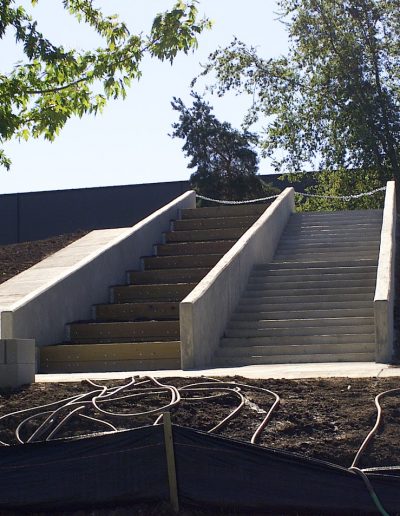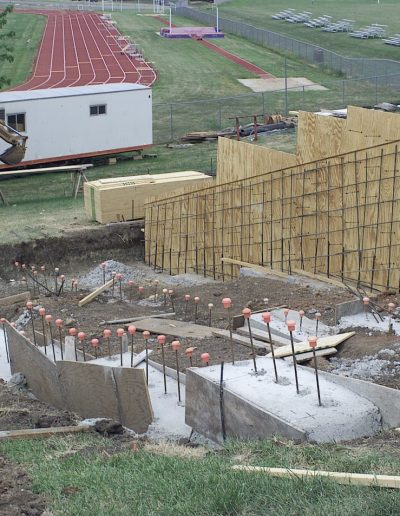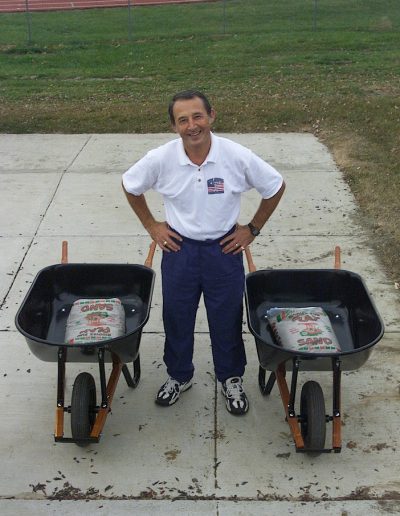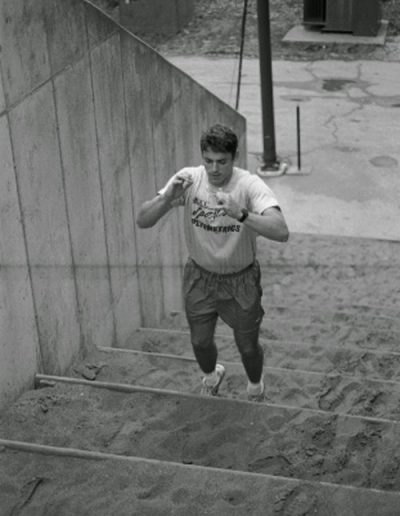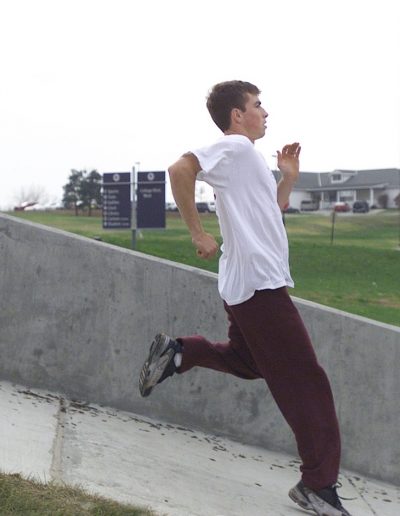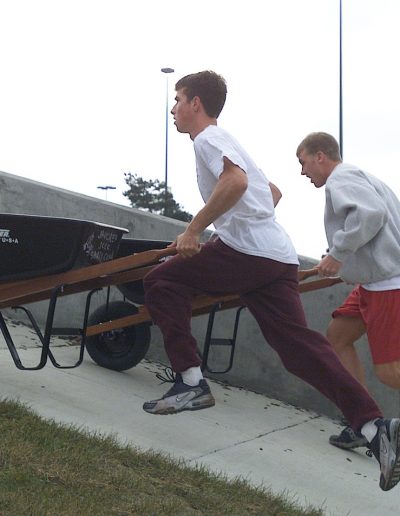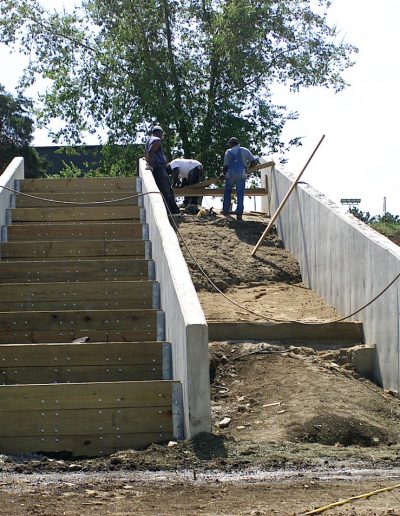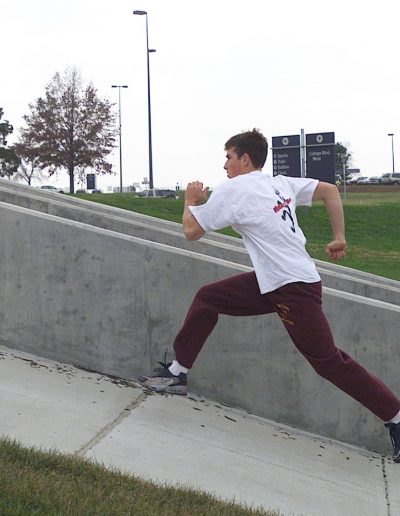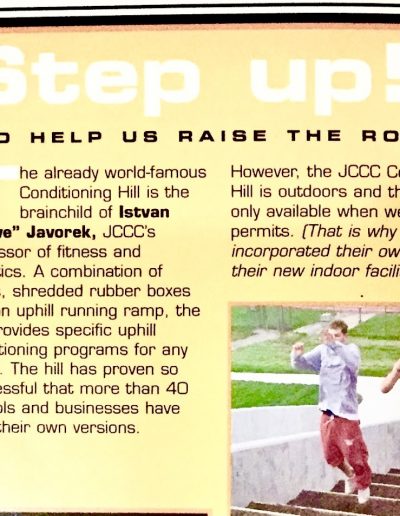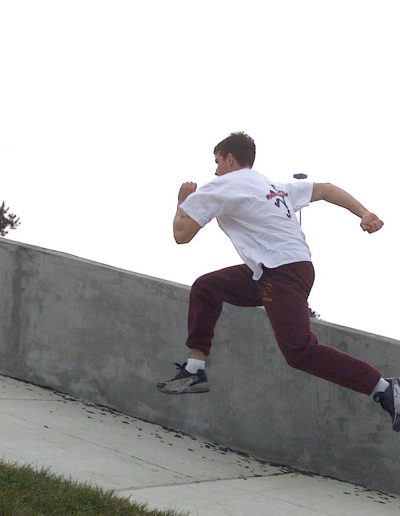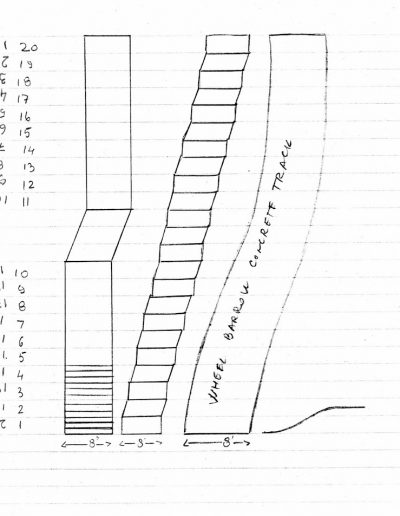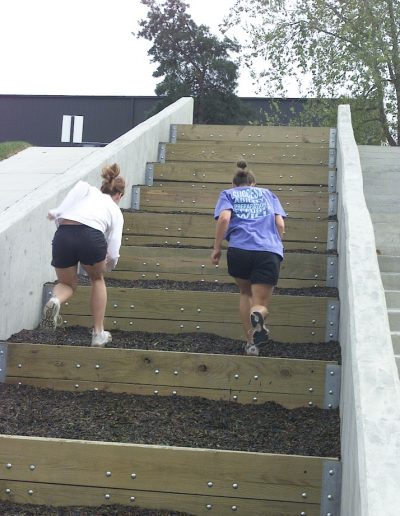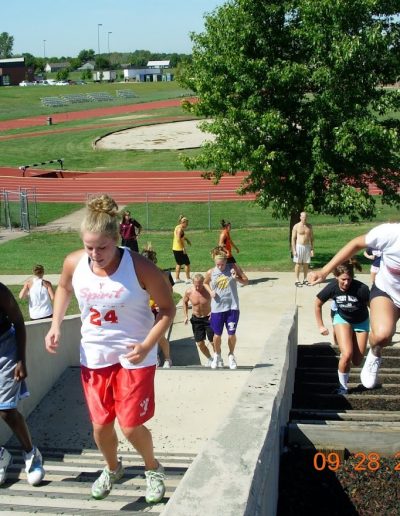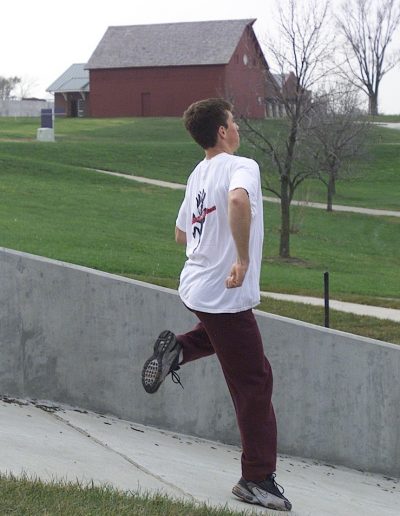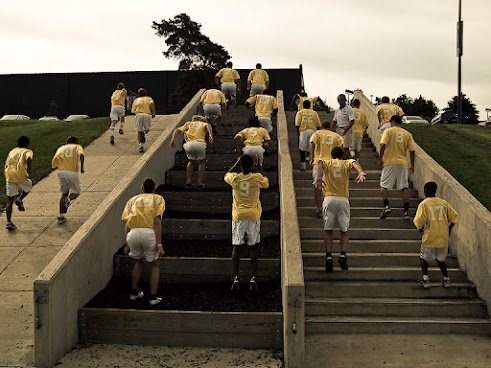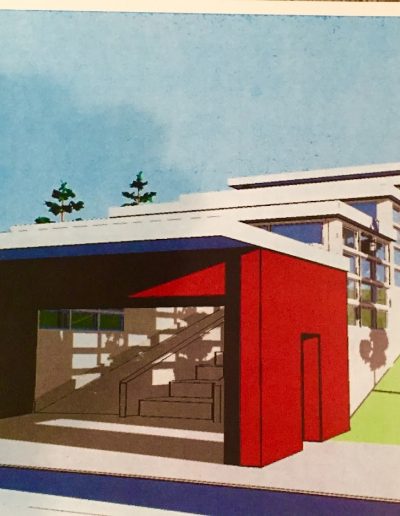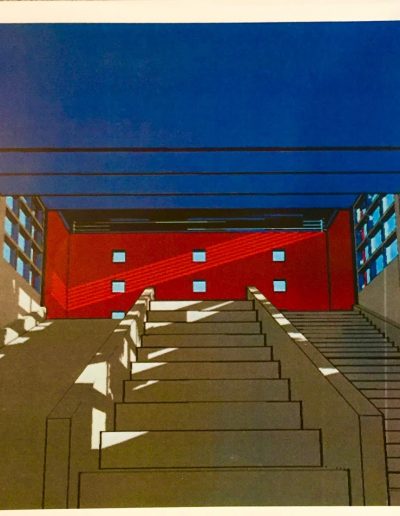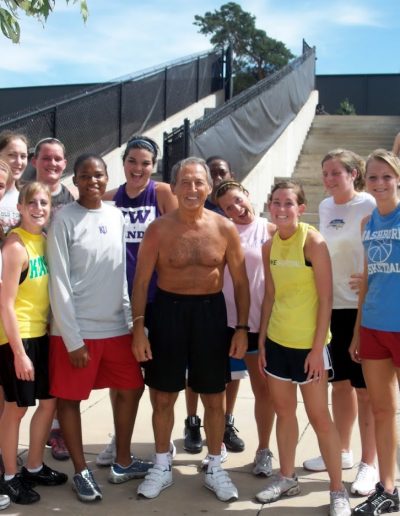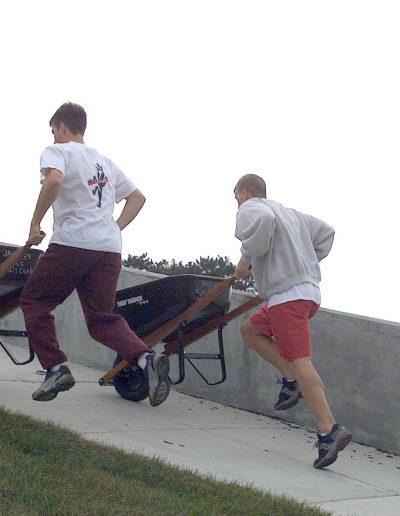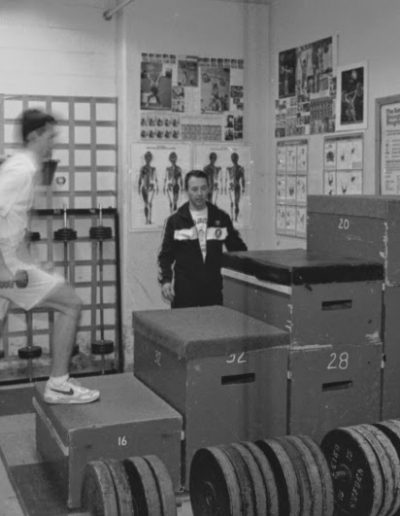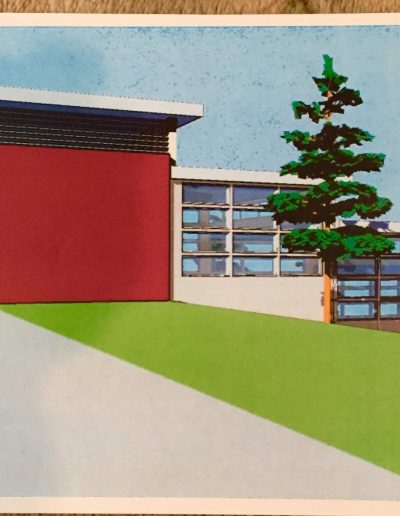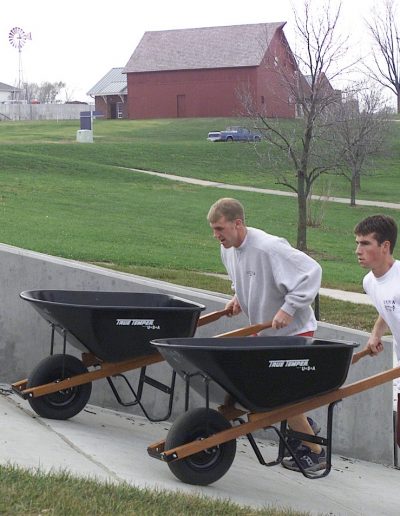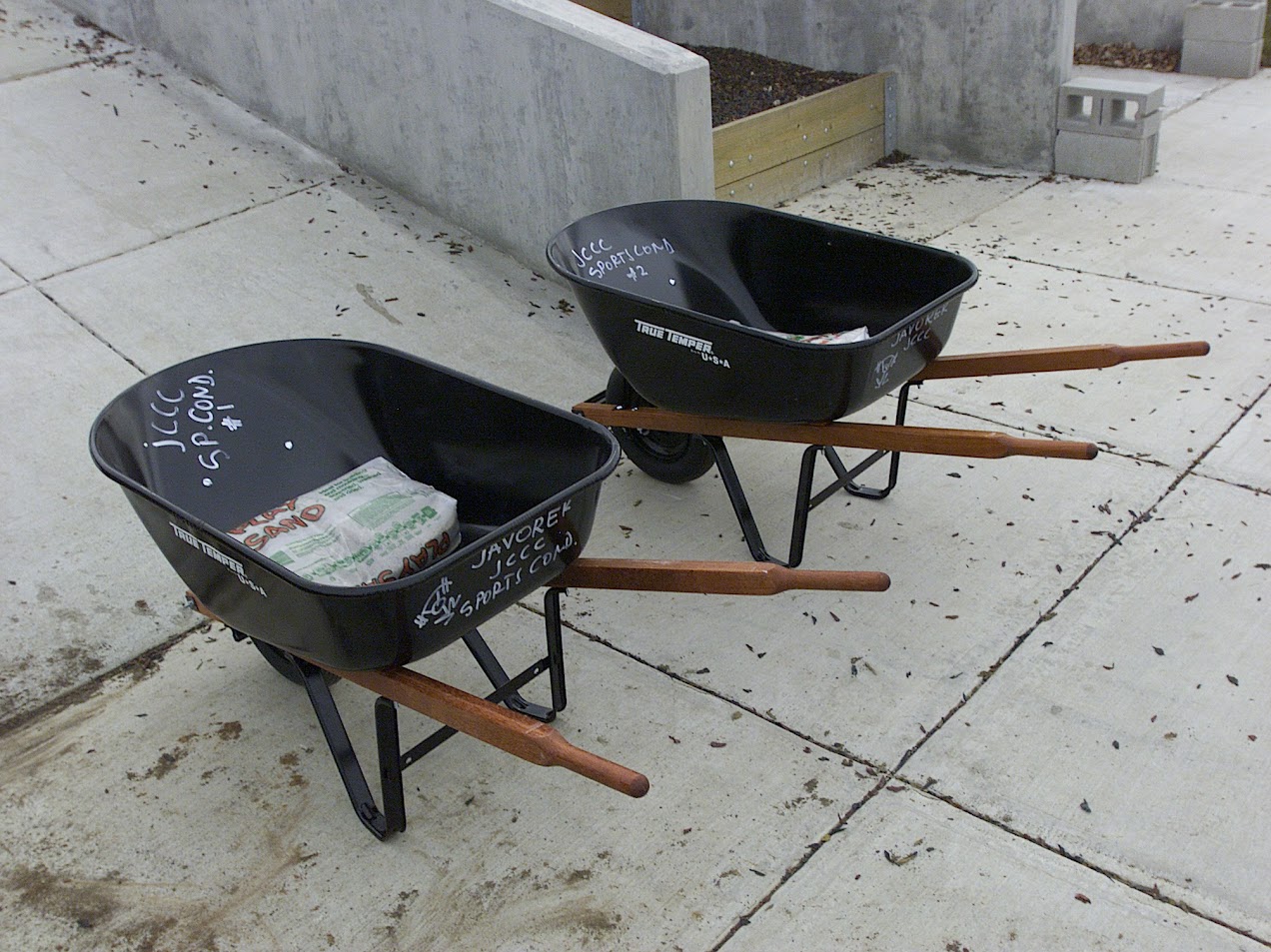
As several of you know I built a “Conditioning Hill” at JCCC campus, which is my unique concept and was the first built of its kind in the world. Since I have written about this Hill in different journals, more than forty colleges, high schools, private fitness-physical therapy business have requested the right to copy my plan and build their own “Conditioning Hill”.
One school, University of Kansas, Lawrence went further and built my plan indoors in their new fitness facility, and the newest request from Elite Fitness, Murrieta, CA who wants to build it indoor, gave the idea of putting a year-round weather “covering” over the Hill at JCCC. Our architectural engineers on campus translated my roof enclosure plan in a beautiful piece of art and when built will become one of the main attractions of JCCC sport facilities.
Every athlete from any sport would get great benefit from the “Javorek Conditioning Hill Complex”.
Thoughts from My Book on “The Hill”
Usually tearing down an old building or facility gives room and chances for rebuilding a new and better one. This happened in the last two years with the JCCC sand stair boxes conditioning area. The former sand boxes were a homemade series of sand-filled boxes arranged stair-like up a slope on campus, next to a stairway. It worked, but the sand on warm days was dirty and would quickly harden to feel like cement, so it had to be thoroughly broken up and raked each day before use. It also limited the types of drills and exercises I could use.
Giving room to a new modern Gym, the sand stair box-conditioning hill was demolished and with a new architectural concept rebuilt. I did fulfill my previous ideas and dreams in building the first specific “conditioning hill” which we named “Javorek’s Conditioning Hill”. Behind my concept is the idea of giving a chance for any given sport to do specific uphill conditioning. Some sports require cardio-vascular endurance but quick and explosive musculature, others short explosive movements, endurance or you specify what exactly your sport or your athletes need. The Conditioning Hill is a combination of stairs, shredded rubber boxes, (with a superior quality of absorbing the shock easy to maintain and at the same very hygienic) instead of sand boxes (which was more difficult to maintain), and an uphill running ramp, providing for any sports and to the most sophisticated coaching concept a chance to prescribe a sport specific conditioning program.
The training area stairs and ramp were constructed using concrete with steel reinforcing like normal exterior stair and sidewalk construction. The stair treads are 15” deep in lieu of 12″, with 6” risers, the total rise is 13’-2” with an 8′ long landing at the midpoint. The ramp is a continuous 3.5:1 slope, which is the grade on either side of the training area to allow for grass mowing. The third area for jumping was constructed using pressure treated wood risers bolted to galvanized steel angles expansion anchored to the steel reinforced concrete walls that separate this area from the ramp on one side and the stairs on the other. The risers are 16” and the treads vary from 5’ long at the bottom to 3’ long at the top. The treads, which needed to be a soft surface for jumping and landing, were constructed of 8” deep rubber mulch over gravel and perforated drainpipe wrapped in filter fabric to allow storm water to drain from the “jumping boxes”. The drainage system was run to daylight beyond the training area. The boxes get shorter to create an increased inclination from the bottom of the run to the top. This increased inclination makes the exercises progressively more difficult as athletes work their way up the jump boxes.
The landing areas need to be soft enough to avoid overstressing to joints during the jumping exercises, but firm enough to hold up under repeated use. So, how I mentioned before, I filled the boxes with eight inches of rubber mulch – recycled tires like the material found at many playgrounds. The drains storm water from the boxes to an area well beyond the training area. As a result, we can use the jump boxes on all but the worst days of our Kansas winters. Maintenance is limited to occasional vacuuming of shredded rubber that spills out of the jump boxes, which we return to the boxes. We added some fence gates to keep out skateboarders who were attracted by the chance to work on their own programs. I use this facility in the specific strength and conditioning programs I design for each team here at JCCC. Uphill training is a key part of our preseason strength and conditioning program, but it’s not the only part. We do traditional weight work every day in addition to daily work on the uphill jump boxes.
The athletes have responded well to the uphill work and seem to enjoy it much more than simply running stairs and lifting weights. The uphill conditioning programs are hard work, though. The initial workouts often leave newcomers overwhelmed. In fact, returning athletes often explain to newcomers that we’re doing this to make them better athletes, not to punish them. But the hard work has paid off. The basketball coaches, for example, say they can’t run the team hard enough to affect their players. After going through our hill training program, the players laugh at the demands of running in the air-conditioned gym.
Because the hill training is so demanding, proper preparation is crucial. Regardless of the athletes’ conditioning level before the preseason program begins, I work them into my superset programs gradually. First, I have them perform each exercise separately, focusing on technique instead of workload. It is imperative that athletes fully understand the proper way to complete each exercise before combining them into a program.
It is also important to not try to do too much too soon. For example, if I have a big, overweight basketball player, I prescribe more sprinting up the slope or stairs until they are in good enough shape to begin leaping and bounding exercises. The prevention of injury must always be an overriding concern. Also, as a general safety rule, I never let injured athletes perform any exercises that could aggravate their injuries. And once the athletic trainer’s clear athletes, I start them on sprints on the ramp and stairs before moving them on to jumps.
After everyone has fully mastered all the exercises, I begin to put them together into supersets. I start by having the athletes complete four repetitions of each exercise and work my way up to whatever final total I have determined for their specific teams. For some teams, I incorporate non-hill training activities, such as a mile run, into the hill workout.
The general conditioning level of the team and demands of the sport help determine the ultimate number of reps in the superset. I prefer to have athletes do all the of one exercise in a group before moving to the next, but sometimes for variety’s sake, I have them complete one rep of each exercise in a series and then repeat that series a certain number of times.
I use most of the same exercises in each of my programs, but based on years of experience, combine them differently to meet the unique demands of each sport. As a rule, jumping exercises are better used to develop explosive power, such as for sprinters, jumpers or track and field throwers. Endurance events are better prepared for using running exercises and easier jumping exercises on the stairs (not the shredded rubber boxes!) such as double leg jumps; zigzag jumps; and run jump & sprints. I would like everyone to use at least some jumping exercises to improve their fitness levels, but each coach should determine what works best for his or her athletes.
As with any strength and conditioning program, it is important to ensure that athletes are not “overworked” in some areas while being “underworked” in others. Backward runs up the ramp will work different group of muscles than forward sprints. The from jumps are another effective way of spreading to load since they work to frontal lower leg muscles and quadriceps more than other exercises.
Although the hill conditioning programs are the focus of preseason training, I use them during the season as well. For example, we lead the women’s and men’s basketball teams through a shortened hill conditioning plan the day after each game and go through the full program when the coaches are feeling that teams’ statistics are dropping. It is a well-known fact that if the team’s statistics drop it is a clear sign of a more mental tiredness than physical, which it is not taken care of it usually ends in catastrophic drop in the team’s performance.
On the following samples, which I am using with my athletes, the number of reps listed reflects the maximum at the end of a training cycle. This is built up gradually during the training cycle. There is always room for improvement, so I am constantly adjusting my programs based on what I hear from the coaches and athletes. The athletes may tell me they want a little more variety or prefer doing one exercise rather than another. Or a coach may say her team needs to work on its quickness this year more than its strength.
Although much of the effort is focused on the team supersets, they are not the only work we do on the hill facility. Motivated athletes who have shown they can easily and safely master the superset activities are offered the opportunity to do additional specialized individual work that is not practical for larger groups. These exercises require great care and concentration to avoid injury, so they must be done in smaller groups.
This is where I introduce outside weight to our hill training sessions. One of the favorites is a weighted wheelbarrow run up on ramp. This exercise is especially useful for pole vaulters, since it closely mimics the unique demands of their event. But sprinters, jumpers, American football players could benefit as well.
Another favorite is to have athletes perform exercises while carrying dumbbells, provided they are spaced far enough apart so a dropped dumbbell won’t injure another athlete. For the most part, I try to keep exercises basic and directly related to movements required for their sport. I do look to introduce as many variations to my exercises as I can, while at the same time keeping their necessity and usefulness in mind. It is easy to create new exercises that look good but don’t help in athletic preparation. So, I think twice before changing exercises or choosing new ones.
Most of the exercises listed in the Supersets samples are self-explanatory while others need a short description.
Run – Jump & Sprint: Start with a three-four step run to the first stair followed by double-leg jumps up two, three or four (or more) stairs. Sprint up through the mid-point landing and repeat again the same way: run, then jump and sprint to the top. Single Leg Sideways Jumps (same leg and shoulder; opposite leg and shoulder): The same leg and shoulder jump has the athlete jump using the same leg as his or her leading shoulder, such as jumping to his or her left using the left leg. The opposite leg and shoulder jump has the athlete jump using the leg opposite the leading shoulder, such as jumping to the left using the right leg. Repetition should typically be balanced so the athletes make the same number of jumps on each leg using each leading shoulder.
Frog Jumps: Start bent over with a curved back, slightly bent knees, and ankles touching. Jump with arms swinging overhead, extending the whole body. Upon landing, return to the start position and repeat to the top of the stairs or of the ramp or shredded rubber boxes. Double Leg Zig-Zag Jumps: Keeping feet parallel, jump from right side of step or box to the left side of the same box. Then jump up to the right side of the next step or box and repeat.
Give Credit to the Creator!

